Rose Cosmos (Kosmos)
Sometimes you admire a flower and catch yourself thinking that its beauty is simply unearthly, divine. This is exactly the case with the Cosmos rose variety. It is incredibly attractive, and all thanks to the delightful buds of an elegant shape and delicate color. Learn more about this wonderful ornamental plant from our story.

History of origin
The culture appeared in Germany, where it was bred by the famous company "Cordes". This company is a large rose nursery founded by Wilhelm Cordes I back in 1887. Our heroine is the result of the selection of 2006. Already in 2007, she became the owner of the ADR mark. In addition, the variety has repeatedly received medals at various flower competitions over the course of two decades of its existence. In particular, 2009 brought the first prize to the noble plant at the Hradec Kralove event in the Czech Republic. Other variety names: Kosmos Fairy Tale, KORpriggos.
Description of appearance and features
Cosmos belongs to the floribunda group of roses. Sometimes this beauty is called "fabulous". The unofficial title is due to the incomparable decorativeness of the culture. The plant has large, up to 10 cm in diameter, double cupped flowers. They are often referred to as “nostalgic”. Charming roses are collected in racemose inflorescences of three pieces. The buds are composed of tightly closed petals. The shade of the flowers of this perennial is white with an admixture of creamy notes. Under the condition of prolonged cool summer weather, it is replaced by a pink color. The aroma of the opened buds is pleasant, but light and subtle. The flowering culture begins in June, and you can enjoy it until stable autumn frosts. As with all floribunda plants, flowering is lush and abundant. The perennial belongs to the multi-flowering varieties.
If we talk directly about the plant, then the hybrid is a dense shrub with upright, erect shoots. He has average dimensions: height - from 70 to 90 cm, width - from 0.4 to 0.6 meters. Perennial stems do not differ in strength and flexibility - they sag under the weight of inflorescences. It follows that the shoots must be tied up in order to avoid damage and the collapse of the bush. The leaves of the rose are large, dark green, with a slight gloss.
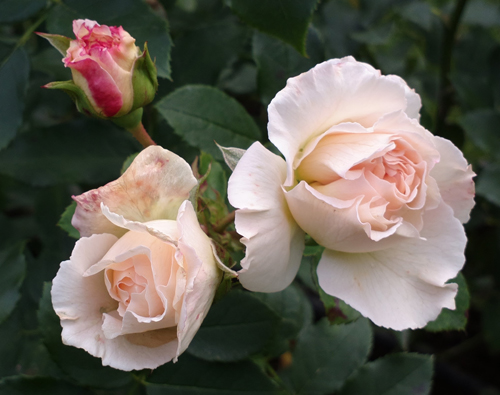
Kosmos hybrid is highly resistant to frost and diseases. Resistance to rain is average, as well as to drought. Flower petals do not fade in the sun and do not lose their attractiveness under the influence of precipitation. When cultivated in the southern regions, the crop can be left uncovered for the winter.
The nuances of growing
Delicate beauty Cosmos is unassuming to care for. However, this does not mean that basic activities such as watering, loosening, weeding, fertilizing and pruning can be neglected. If you are interested in normal growth, development and abundant flowering of a varietal rose, moisten the soil under it weekly, and in the heat - every 3 days. Loosening the soil in the near-trunk zone is required the next day after watering the bush. Then weeding is carried out. As for dressings, nitrogen fertilizers are applied in the spring, and mineral fertilizers - during the period of budding on perennials and during flowering. Feeding the plant with phosphorus-potassium concentrate is necessary in the fall, a couple of weeks after the culture has faded.
A very important procedure for Cordes floribunda is pruning. In order to rejuvenate the bush, it is deprived of dry, thin and damaged shoots. The plant can undergo formative pruning if the crown becomes sloppy in appearance. Before the onset of cold weather, the stems of the rose are also shortened, leaving only 40 cm from the main length; leaves are torn off. Next, Kosmos is sprinkled with dry earth to a height of 0.3 meters. Oak foliage or spruce branches are used as a covering material.

Plant Kosmos in a standard manner. Previously, in the soil, which must be fertile and breathable, a hole is made and a little mature compost is introduced into it.Then a part of the prepared soil is poured into the planting pit. But first, a layer of drainage material is laid on the bottom of the hole. Make sure that the root system of the seedling does not come into contact with organic fertilizer during planting. And one more thing: do not place this variety, like other Cordes hybrids, in an area where representatives of the Pink family have already grown for five years.
Use cases
Space looks gorgeous no matter where you decide to plant it. It is appropriate in a large flower bed and in a mixborder, alone against the background of a green lawn or low-growing grasses with inflorescences of contrasting shades, in rockeries. Ornamental flowering shrub is used in the design of a low hedge, garden paths, to divide the site into zones. A rose with buds of a delightful color can be placed near the gazebo, garden bench, sculptural composition. Plants with red, orange, and bright yellow buds will be good crop neighbors. So the European beauty will stand out from the total mass of the items that make up the floral ensemble. A harmonious composition can be obtained by combining this variety with miniature conifers, clematis of pastel shades, silver wormwood.
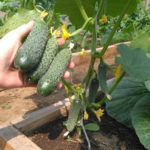
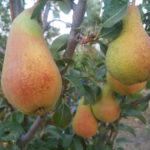
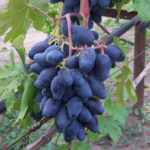

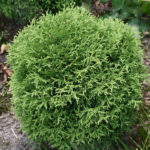
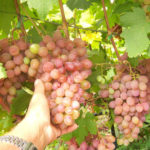



I agree with the author of the article - the roses of this variety are very beautiful: they are large, there are many petals, a pleasant shade - porcelain and milk. The flower opens slowly, which is why the flowering becomes long, and since there are many buds, it seems endless (it continues without any break for rest from the beginning of summer until the beginning of noticeable frosts). The rose has good winter hardiness - with a simple shelter it does not freeze and, what is important, practically does not react to winter thaws and does not dry out. But the variety has one significant drawback for me - roses have fragile stems and lodge under the weight of abundant flowering. First, I made props, then transplanted them onto the retaining wall, and now the roses hang down from it.